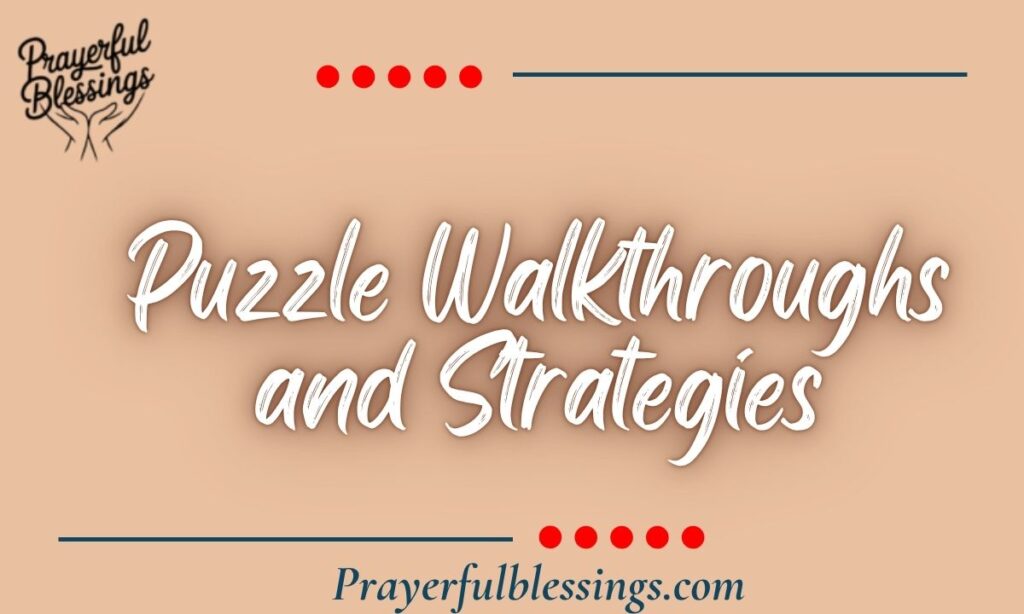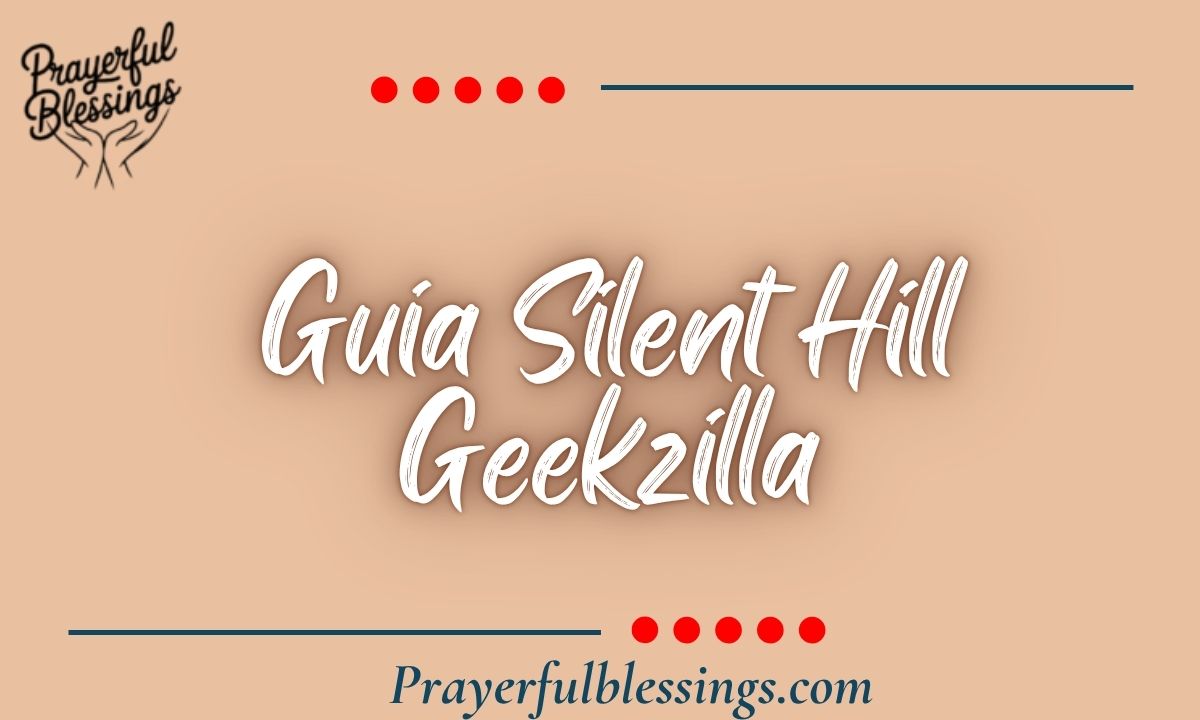Silent Hill stands as one of gaming’s most iconic horror franchises. The Guia Silent Hill Geekzilla provides comprehensive coverage of this legendary series. This guide helps both newcomers and veterans navigate the fog-shrouded streets. Every puzzle, enemy, and hidden secret is explained in detail.
The franchise revolutionized psychological horror in video games. Unlike typical horror titles that rely on jump scares, Silent Hill dives deep into the human psyche. The series explores themes of guilt, trauma, and personal demons. Each installment presents a unique perspective on these dark themes.
Understanding Silent Hill requires more than just gameplay skills. The symbolism and storytelling are integral to the experience. This comprehensive guide breaks down every element that makes Silent Hill unforgettable. Prepare to uncover the mysteries that have captivated millions of horror fans worldwide.
What Is the Guia Silent Hill Geekzilla?
The Guia Silent Hill Geekzilla is a complete resource for the Silent Hill franchise. It covers gameplay mechanics, story analysis, and hidden content. This guide was created by dedicated fans at Geekzilla who spent countless hours researching. Every detail has been verified through multiple playthroughs.
This comprehensive walkthrough serves multiple purposes for different player types. Newcomers find step-by-step instructions for navigating each game. Veterans discover deeper lore connections and overlooked secrets. The guide connects narrative threads across the entire series.
Geekzilla’s approach emphasizes both practical gameplay and thematic understanding. Combat strategies are paired with enemy symbolism explanations. Puzzle solutions include context about why those puzzles exist. This dual focus creates a richer gaming experience for everyone.
The Origins of Silent Hill
Silent Hill debuted in 1999 on the original PlayStation. Konami developed this groundbreaking title to compete with Capcom’s Resident Evil. However, the game took a completely different approach to horror. Instead of zombies and action, it focused on psychological terror.
The game’s director, Keiichiro Toyama, drew inspiration from various sources. Films like Jacob’s Ladder influenced the nightmarish visual design. Literature about cults and occultism shaped the story. The result was something entirely unique in gaming.
The town of Silent Hill itself became an iconic character. The perpetual fog created an oppressive atmosphere. Radio static warned of approaching monsters. These elements combined to create unforgettable tension that defined survival horror.
| Game Title | Release Year | Platform | Developer |
| Silent Hill | 1999 | PlayStation | Team Silent |
| Silent Hill 2 | 2001 | PS2, Xbox, PC | Team Silent |
| Silent Hill 3 | 2003 | PS2, PC | Team Silent |
| Silent Hill 4 | 2004 | PS2, Xbox, PC | Team Silent |
| Silent Hill: Origins | 2007 | PSP, PS2 | Climax Studios |
Recommended Play Order (Geekzilla Method)
The Geekzilla recommended order differs from chronological release dates. This sequence maximizes narrative impact and thematic understanding. Starting with Silent Hill 2 allows newcomers to experience the strongest entry first. This game requires no prior knowledge of the series.
After Silent Hill 2, players should experience the original Silent Hill. This establishes the town’s history and cult background. The story becomes more coherent with this foundation. Next comes Silent Hill 3, which directly continues the first game’s narrative.
Silent Hill 4: The Room offers a different experience entirely. This experimental entry works best after understanding the series conventions. Later games like Origins and Homecoming provide additional context. However, they’re optional for understanding the core narrative.
Optimal Sequence:
- Silent Hill 2 – Standalone masterpiece
- Silent Hill – Series foundation
- Silent Hill 3 – Direct sequel
- Silent Hill 4 – Experimental entry
- Origins – Prequel exploration
Core Themes and Symbolism
Guilt and punishment form the foundation of Silent Hill’s narrative structure. The town manifests personal demons as physical monsters. Each character faces their own customized nightmare. This makes every playthrough thematically unique.
Religious symbolism appears throughout the franchise extensively. The Order cult practices twisted interpretations of various religions. Christian, pagan, and indigenous American beliefs blend together. This creates a disturbing spiritual landscape.
The duality of reality separates Silent Hill from other horror games. Characters shift between the normal fog world and hellish Otherworld. These transitions represent psychological breaks or revelations. Understanding when and why these shifts occur enriches the experience.
Parental relationships drive many character motivations and fears. Father-daughter dynamics appear repeatedly across multiple games. Absent mothers create deep psychological wounds. These family traumas manifest as the most disturbing monsters.
Key Characters and Their Arcs
James Sunderland remains the franchise’s most complex protagonist. His journey in Silent Hill 2 explores grief and repression. The letter from his deceased wife draws him to town. His true motivations slowly unravel throughout the game.
Heather Mason (Cheryl) connects the first and third games. Her identity crisis forms the core of Silent Hill 3. She discovers her connection to cult activities and prophecies. Her arc examines identity, memory, and predetermined destiny.
Harry Mason begins as an ordinary father searching for his daughter. His determination drives the original game’s narrative. He uncovers the town’s dark secrets through investigation. His actions have consequences that ripple through future games.
Character Motivation Table:
| Character | Game | Core Motivation | Internal Conflict |
| James Sunderland | SH2 | Find deceased wife | Guilt and repression |
| Heather Mason | SH3 | Escape cult destiny | Identity crisis |
| Harry Mason | SH1 | Rescue daughter | Protecting innocence |
| Henry Townshend | SH4 | Escape apartment | Voyeurism and guilt |
Monster Analysis – Beyond Jump Scares
Pyramid Head represents guilt and sexual frustration in Silent Hill 2. This executioner figure punishes James throughout his journey. The monster’s design intentionally evokes discomfort and unease. His appearances mark significant psychological revelations.
The nurses symbolize different concepts depending on the game. In Silent Hill 2, they represent James’s sexual frustration. In Silent Hill 3, they reflect Heather’s fear of hospitals. Each game tailors monsters to protagonist psychology.
Abstract Daddy ranks among the series’ most disturbing creatures. This monster represents childhood trauma and abuse. The design deliberately creates visceral discomfort in players. Defeating it requires confronting difficult emotional truths.
Monster design in Silent Hill always serves narrative purposes. They’re not random creatures meant to scare. Each represents specific psychological states or traumas. Understanding monster symbolism deepens appreciation for the game’s artistry.
Puzzle Walkthroughs and Strategies

Silent Hill puzzles require observation and logical thinking. The difficulty setting affects puzzle complexity significantly. Easy mode provides straightforward solutions. Hard mode demands careful attention to environmental details.
Riddle difficulty should be set based on experience level. Normal mode offers a good balance for most players. Riddles reference literature, poetry, and philosophical concepts. Having a notebook to track clues proves invaluable.
The piano puzzle in Silent Hill appears frequently in discussions. Players must match bird paintings to correct piano keys. The solution requires reading environmental clues carefully. This puzzle exemplifies the series’ approach to challenges.
Common Puzzle Types:
- Number locks requiring mathematical calculations
- Symbol matching based on environmental observation
- Riddles drawing from literature and poetry
- Musical puzzles involving instrument interaction
- Item combination requiring inventory management
Survival and Combat Tips
Resource management is crucial for survival in Silent Hill. Ammunition remains scarce throughout most games. Health items should be conserved for critical situations. Running past enemies often proves smarter than fighting.
The radio serves as your primary warning system. Static increases as monsters approach your location. Learning to interpret static intensity prevents ambushes. Always keep the radio equipped in dangerous areas.
Melee weapons provide reliable backup when ammunition runs low. The steel pipe appears in most games as standard equipment. Learning attack patterns and timing improves survival rates. Defensive play outweighs aggressive approaches.
Difficulty settings affect both combat and puzzle complexity. Action difficulty determines enemy health and damage output. Riddle difficulty changes puzzle solutions and clue availability. Most players should start with normal settings.
Combat Essentials:
- Conserve ammunition for boss encounters
- Use melee weapons for weaker enemies
- Learn dodge timing to avoid damage
- Exploit enemy weaknesses when possible
- Strategic retreat beats unnecessary confrontation
Hidden Endings and Unlock Requirements
Multiple endings encourage replay value across the series. Player choices and actions determine which conclusion unlocks. Some endings provide closure while others raise questions. Certain endings require specific item collection and behavior patterns.
Ranking systems track player performance across various categories. Completion time affects ending availability in some games. Number of saves used can influence outcomes. Health item usage factors into calculations for certain titles.
Silent Hill 2 Endings
The “Leave” ending represents acceptance and moving forward. James acknowledges his actions and seeks redemption. This conclusion provides the most hopeful outlook. Most players encounter this ending on their first playthrough.
The “In Water” ending shows James succumbing to guilt. This dark conclusion resonates with many players emotionally. Specific behaviors like examining Angela’s knife trigger this ending. Health management and certain dialogue choices influence this outcome.
The “Maria” ending suggests James hasn’t learned anything. He replaces Mary with her doppelganger. This ending requires frequent Maria interactions throughout gameplay. It represents denial and repetition of harmful patterns.
The “Rebirth” ending involves occult resurrection attempts. Players must collect four special items throughout the game. This conclusion references the cult activities from other games. It requires a second playthrough to unlock.
The “Dog” ending provides comic relief after emotional playthroughs. A dog controls everything from a secret room. This joke ending mocks the seriousness of previous conclusions. It unlocks after completing the game three times.
Silent Hill 3
Silent Hill 3 endings depend on Heather’s forgiveness capacity. The standard ending shows Heather defeating the cult. This conclusion provides narrative closure to the first game’s story. Most players naturally obtain this ending.
The possession ending occurs when Heather doesn’t forgive Claudia. This darker conclusion shows corruption winning. Players must refuse forgiveness at key dialogue moments. The ending emphasizes revenge over healing.
Silent Hill 4
Silent Hill 4 features four possible endings with variations. Walter Sullivan’s ritual creates unique circumstances for Henry. Eileen’s health throughout the game determines ending availability. Her survival state affects the final outcome significantly.
The best ending requires keeping Eileen healthy throughout the game. Players must escort her carefully through dangerous areas. Healing items should be prioritized for her safety. This ending provides the most complete resolution.
Easter Eggs, Secrets, and Fan Discoveries
The UFO endings appear in multiple Silent Hill games. These absurd conclusions involve alien abductions. They unlock after completing specific ending requirements. These joke endings became a beloved franchise tradition.
Hidden weapons reward thorough exploration and multiple playthroughs. The Hyper Spray in Silent Hill 2 functions as unlimited ammo. The Heather Beam in Silent Hill 3 provides a powerful attack. These weapons break game balance intentionally for fun.
Room 302 connections span across multiple game entries. This location appears in both Silent Hill 2 and 4. Observant players noticed these connections before Silent Hill 4’s release. These details demonstrate the series’ attention to continuity.
The “One Truth” puzzle in Silent Hill 3 references previous games. Solution numbers correspond to ages and dates from earlier titles. This interconnection rewards longtime fans with recognition. Such details create a cohesive universe feel.
Notable Secrets:
- UFO endings across multiple titles
- Special weapons for completed saves
- Costume unlocks for replay value
- Developer messages hidden in environments
- Cross-game references connecting the series
The Future of Silent Hill
Konami announced multiple Silent Hill projects in recent years. The Silent Hill 2 remake by Bloober Team generated significant excitement. This remake updates graphics while respecting the original vision. Fans cautiously anticipated this revival of the classic.
Silent Hill f represents a new direction for the franchise. This entry moves away from American settings to Japan. Neobards Entertainment brings fresh perspective to the series. The project aims to honor Silent Hill’s psychological horror roots.
Silent Hill: Townfall from Annapurna Interactive promises experimental gameplay. This project comes from the developers behind Outer Wilds. Their unique approach to environmental storytelling suits Silent Hill perfectly. Fans anticipate a thought-provoking experience.
The Silent Hill: Ascension interactive streaming project engaged fans differently. This experimental approach allowed community choices to affect the story. While controversial, it demonstrated franchise evolution attempts. The results influenced ongoing narrative developments.
Upcoming Projects:
| Project | Developer | Type | Status |
| Silent Hill 2 Remake | Bloober Team | Remake | Released 2024 |
| Silent Hill f | Neobards | New Entry | In Development |
| Silent Hill: Townfall | Annapurna | New Entry | In Development |
| Silent Hill: The Short Message | Konami | Free Game | Released 2024 |
FAQ’s
What makes Silent Hill different from other horror games?
Silent Hill emphasizes psychological horror over action and jump scares. The series explores deep themes like guilt, trauma, and personal demons through symbolism.
Do I need to play Silent Hill games in order?
No, most Silent Hill games feature standalone stories. However, Silent Hill 3 directly continues the first game’s narrative, so play those sequentially.
What’s the best Silent Hill game for beginners?
Silent Hill 2 works perfectly for newcomers. It requires no prior knowledge and represents the series at its finest.
Are the monsters in Silent Hill random?
No, every monster represents specific psychological themes related to the protagonist. They’re carefully designed manifestations of inner demons.
How do I get different endings?
Endings depend on player choices and actions throughout the game. Item usage, dialogue selections, and exploration patterns all factor into calculations.
Is Silent Hill based on a real place?
The town draws inspiration from Centralia, Pennsylvania, an abandoned mining town. Silent Hill combines this real location with fictional horror elements.
What’s the significance of Pyramid Head?
Pyramid Head symbolizes guilt and punishment in Silent Hill 2. He represents James’s desire for self-punishment and sexual frustration.
Can I play Silent Hill on modern consoles?
Some titles received HD remasters and remakes. Silent Hill 2 Remake released in 2024 for current-generation platforms.
What does the fog represent?
The fog serves multiple purposes including technical limitations and atmosphere. Symbolically, it represents obscured truth and uncertainty.
Is the cult the main villain?
The Order cult appears in several games but isn’t always the antagonist. Silent Hill focuses more on internal conflicts than external villains.
Final Thoughts
The Guia Silent Hill Geekzilla provides everything needed to appreciate this legendary franchise. From gameplay mechanics to deep symbolism, this guide covers all aspects. Silent Hill remains unmatched in psychological horror gaming.
Understanding the series requires patience and observation. The games reward careful attention to detail and thematic analysis. Every playthrough reveals new layers of meaning and symbolism.
Whether you’re discovering Silent Hill for the first time or revisiting old favorites, this guide enhances the experience. The fog-shrouded town continues to captivate players decades after the original release. Silent Hill’s influence on horror gaming cannot be overstated.

Meet Eman, the heart and soul behind PrayerfulBlessings! With a deep understanding of prayers and blessings, she crafts heartfelt messages that inspire and uplift. Whether you’re seeking comfort, guidance, or strength, Eman’s carefully crafted prayers offer a sense of peace and hope. Let her words bring warmth and positivity to your day, filling your heart with faith and gratitude. Get ready to experience the power of prayer!

